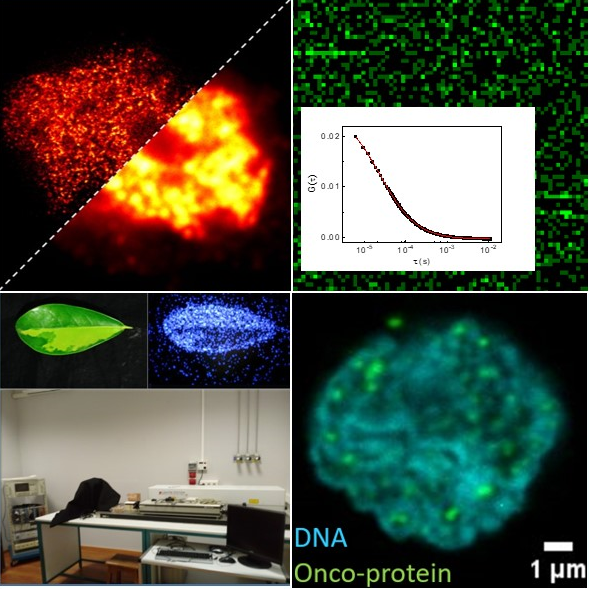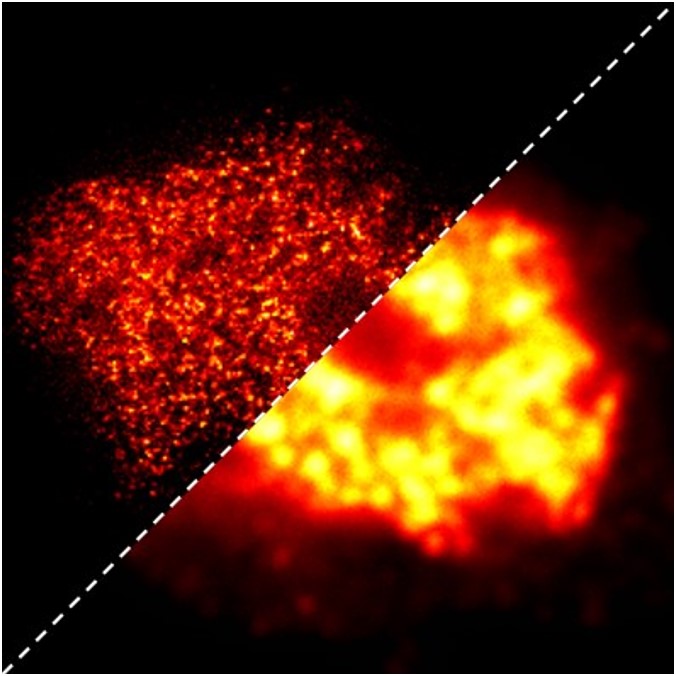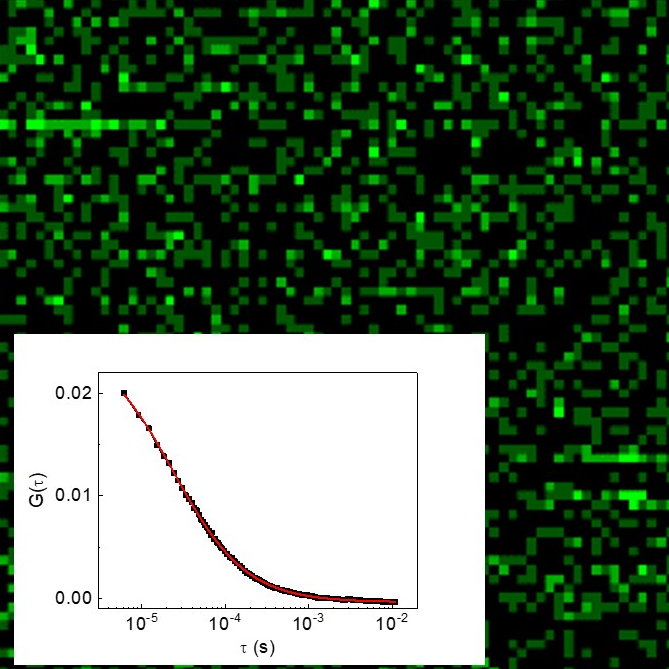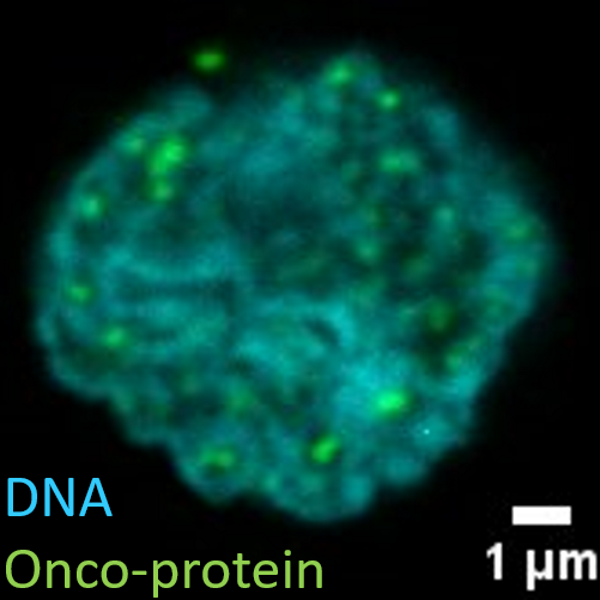Biophysics

Biophysics applies the theories and methods of physics to understand how biological systems work. Modern biophysical methods include microscopy & imaging, single molecule techniques, spectroscopy, electrophysiology, modeling & simulations. The following lines of research in Biophysics are active at the DFA:
- Optical Microscopy and Nanoscopy
- Fluorescence correlation spectroscopy
- Molecular mechanisms of cancer
- Luminescence
Optical Microscopy and Nanoscopy

Faculty: Luca Lanzano’
Optical microscopy is a non-invasive technique to study cellular structures and dynamics spanning scales from the single molecule to small organisms. Research is focused on the development of advanced fluorescence imaging methods including super-resolution microscopy (nanoscopy) and time-resolved/spectral methods (FLIM, Phasors, FRET).
Fluorescence correlation spectroscopy

Faculty: Luca Lanzano’
Fluorecence Correlation Spectroscopy (FCS) is a single-molecule technique based on the analysis of spontaneous fluctuations of the fluorescence intensity. Research is focused on the development of advanced correlation methods (FCS, ICS and related techniques) for the detection of fast dynamical processes, such as molecular diffusion and interactions in live cells.
Molecular mechanisms of cancer

Faculty: Luca Lanzano’
Study of the molecular mechanisms at the origin of DNA damage and genomic instability of tumors. High resolution imaging of oncogene-induced alterations of chromatin organization. Research funded by AIRC.